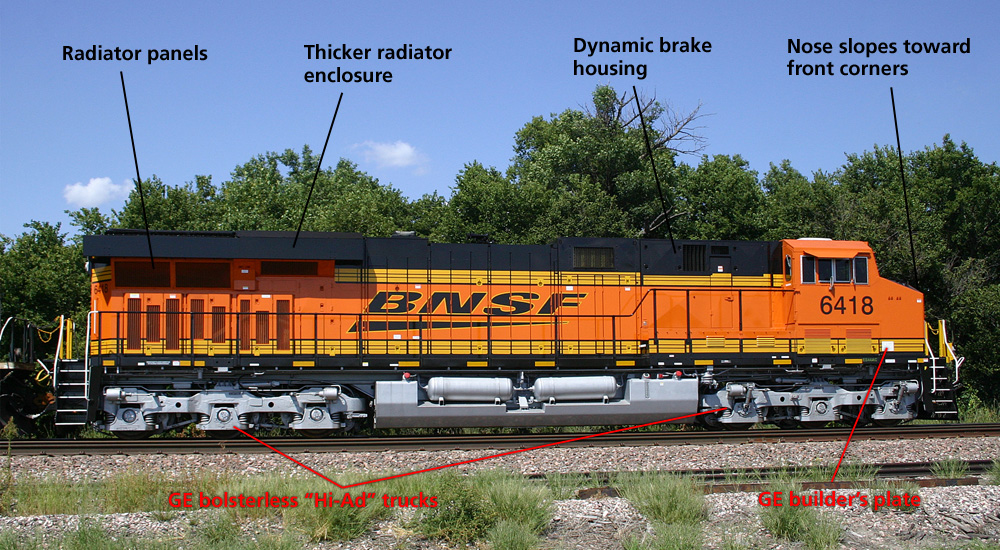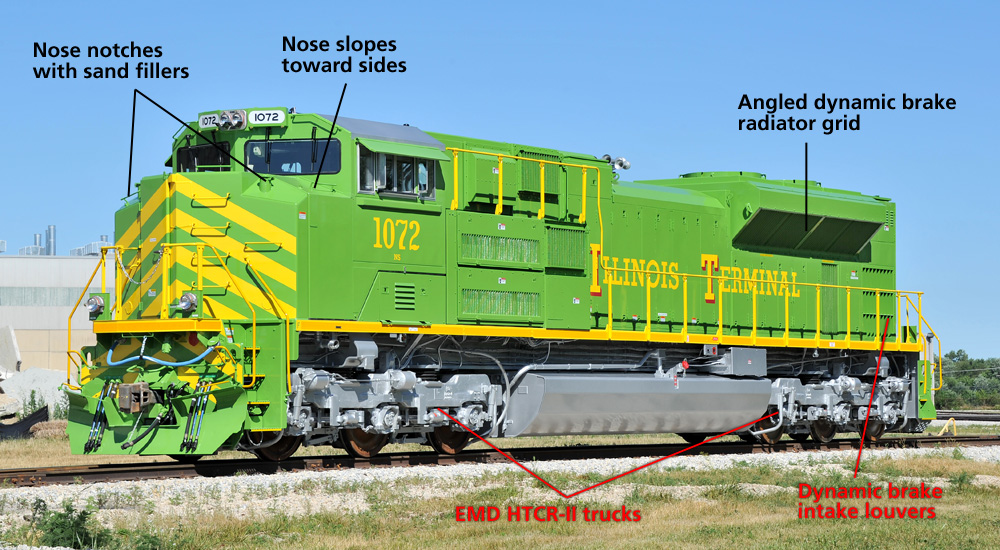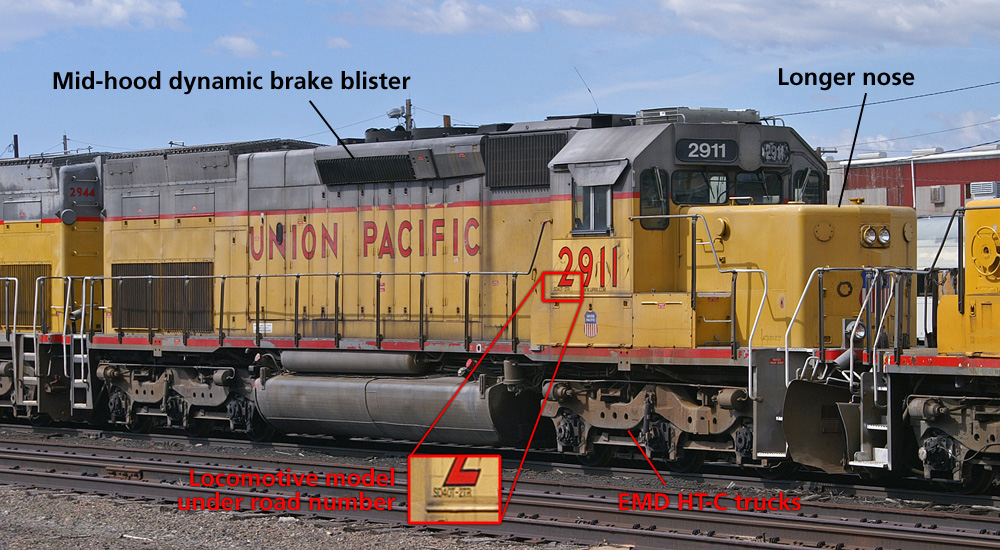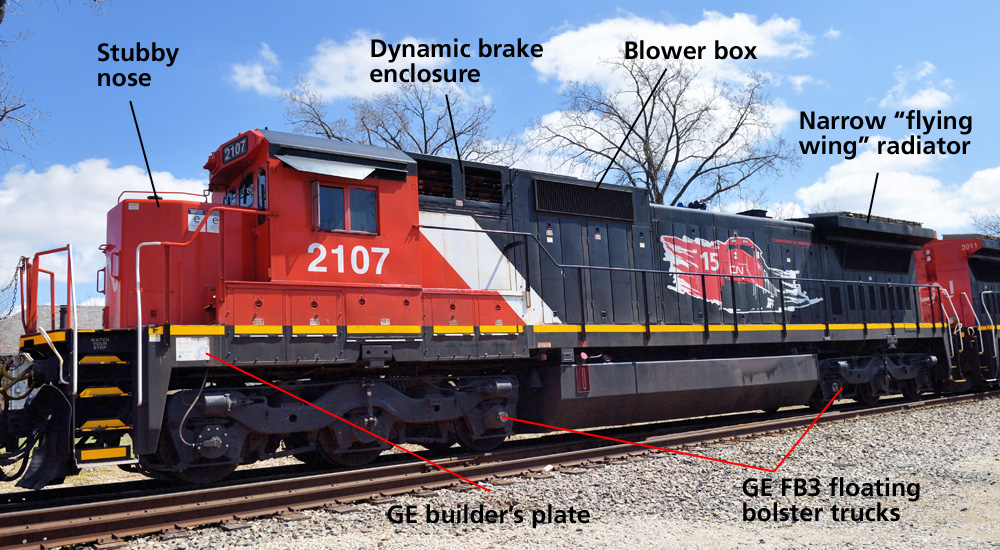Q: In the good old days, it was fairly easy to distinguish among the major diesel locomotive players, especially the carbody units from Alco, Baldwin, and Electro-Motive Division (EMD). They all had distinctive noses and cabs. My question: Are there some features that will help with spotting EMD vs GE diesels I see on railroads today? Is there a family resemblance? What distinguishes a GE U-Boat from an EMD Geep? I know you’re going to get into technical stuff like truck design or the type of windshield wiper blades or the wattage of the ditch lights. I’m more interested in Loco Spotting 101 – the down and dirty when you see a locomotive moving at 40 mph. I know this leaves me open for a sales pitch for a number of Kalmbach books covering this topic. – Neil Berger
A: The differences between modern locomotives are subtle, especially since practically every diesel being released these days seems to come with the same North American Comfort Cab. While repeated observation can discern commonalities in the products of a certain locomotive manufacturer, in most cases you can also find those same spotting features in some of the competition’s products. But there are some distinctive features that can give you a pretty good guess when spotting EMD vs GE diesels.
The most definitive spotting feature, if you can see it on a locomotive going by at 40 mph, is the builder’s plate. Some locomotives have a small panel, plate, or label at the bottom of the cab or on the sill near the front of the locomotive. Others may have the model of the locomotive in small print on the side of the cab or on the sill.

If all you have to go on is a quick impression of the locomotive’s shape, there are a few things you can go by. I will caution you, though, that none of these are definitive, because hundreds of different diesel models have been built (and occasionally rebuilt) over the years, and design features change, sometimes radically.
The dynamic brake
The first thing to look at when spotting EMD vs GE diesels is the shape of the dynamic brake radiator and intake. On General Electric models, this is usually shaped like a rectangular slab at the back of the long hood, supported by a slightly angled radiator grid below it. On third-generation models like the Dash-8 series, the radiator has a fairly thin profile, giving it the appearance of a “flying wing.” On modern GE diesels, like the ES44AC, it’s thicker, but a similar shape.
Modern Electro-Motive Division/Electro-Motive Diesel engines, like the SD70ACe, have a radiator that looks like an inverted wedge, with radiator grids that angle sharply outward from the end of the long hood. But on third-generation EMDs like the SD40T-2, the dynamic brake was found in a narrow bulge or “blister” near the middle of the long hood.

The nose
If the locomotive has a wide nose (a.k.a. Comfort Cab or Safety Cab), take a look at the nose. The nose of a GE wide cab usually has triangles that slope downward toward the front corners. Wide-cab EMD noses, on the other hand, usually slope straight toward either side, parallel to the body of the locomotive. Sometimes there’s another notch at the front of these sloped sections, where the sand filler cap is.
On older locomotives, spotting EMD vs GE diesels by the nose is even easier. Third-generation EMDs have fairly long noses (such as the 88-inch honker on the SD40-2), while those on GE Dash-8s and Dash-9s are shorter. Earlier GE diesels, like the U-boats, have almost comically stubby noses.

Trucks
You can also find a clue in the kind of trucks the locomotive rides on. Detailing the spotting differences between different kinds of locomotive trucks would fill a whole article by itself, and you said you didn’t want to get into technical stuff like truck design, anyway. And that wouldn’t even be definitive, since owners who rebuilt their older engines sometimes put them on different trucks, even those from a different builder. But if you can train a zoom lens on a parked locomotive, you’ll find that manufacturers often mold their logo and/or the truck type into the sideframes.

Finally, since you brought it up, here’s the obligatory book pitch. Jeff Wilson’s Guide to North American Diesel Locomotives is loaded with information about diesels old and new, including spotting features, years of manufacture, railroad rosters, and more. You can get a copy at the Kalmbach Hobby Store.
Send us your questions
Have a question about modeling, operation, or prototype railroads? Send it to us at AskTrains@Trains.com. Be sure to put “Ask MR” in the subject.














